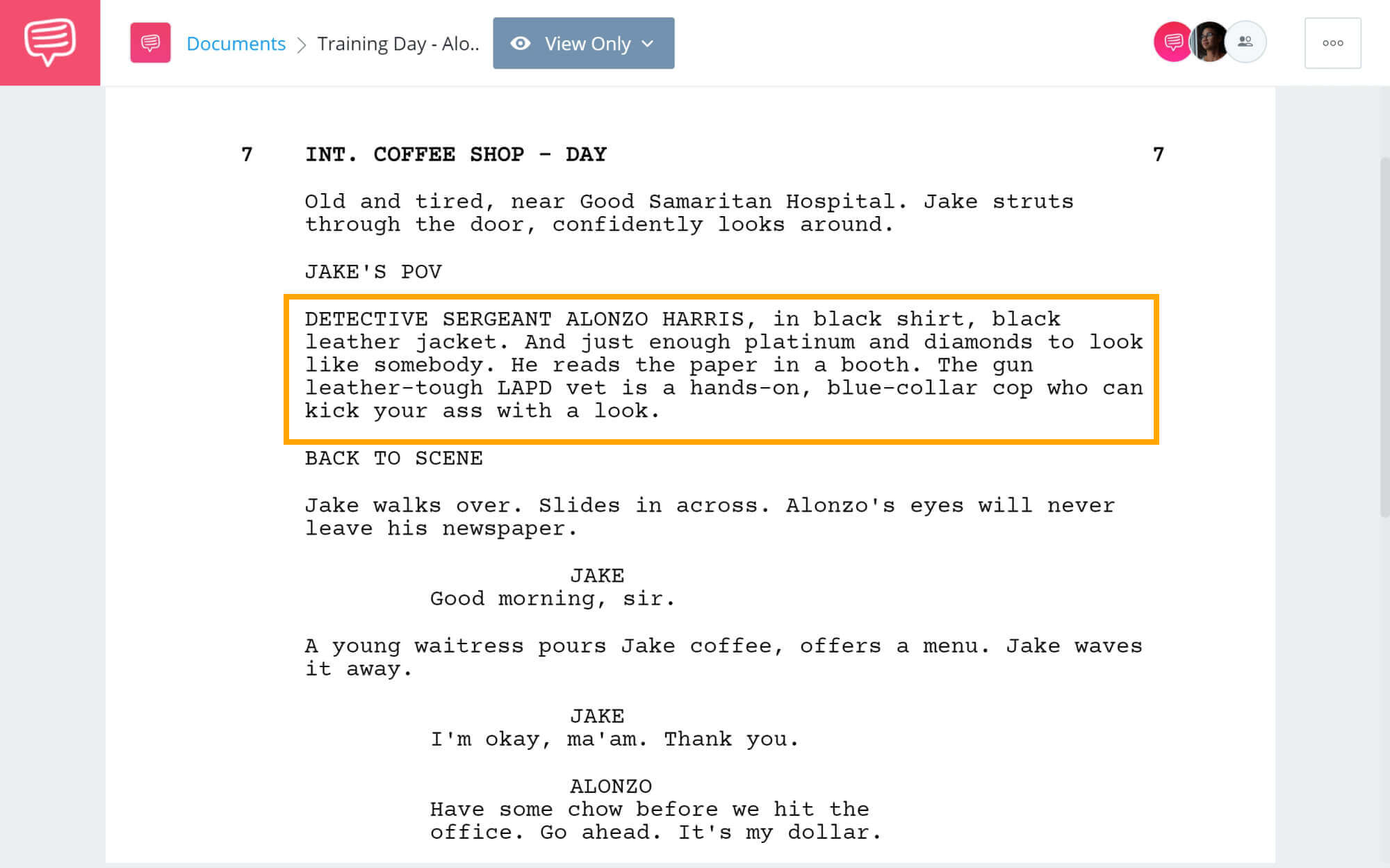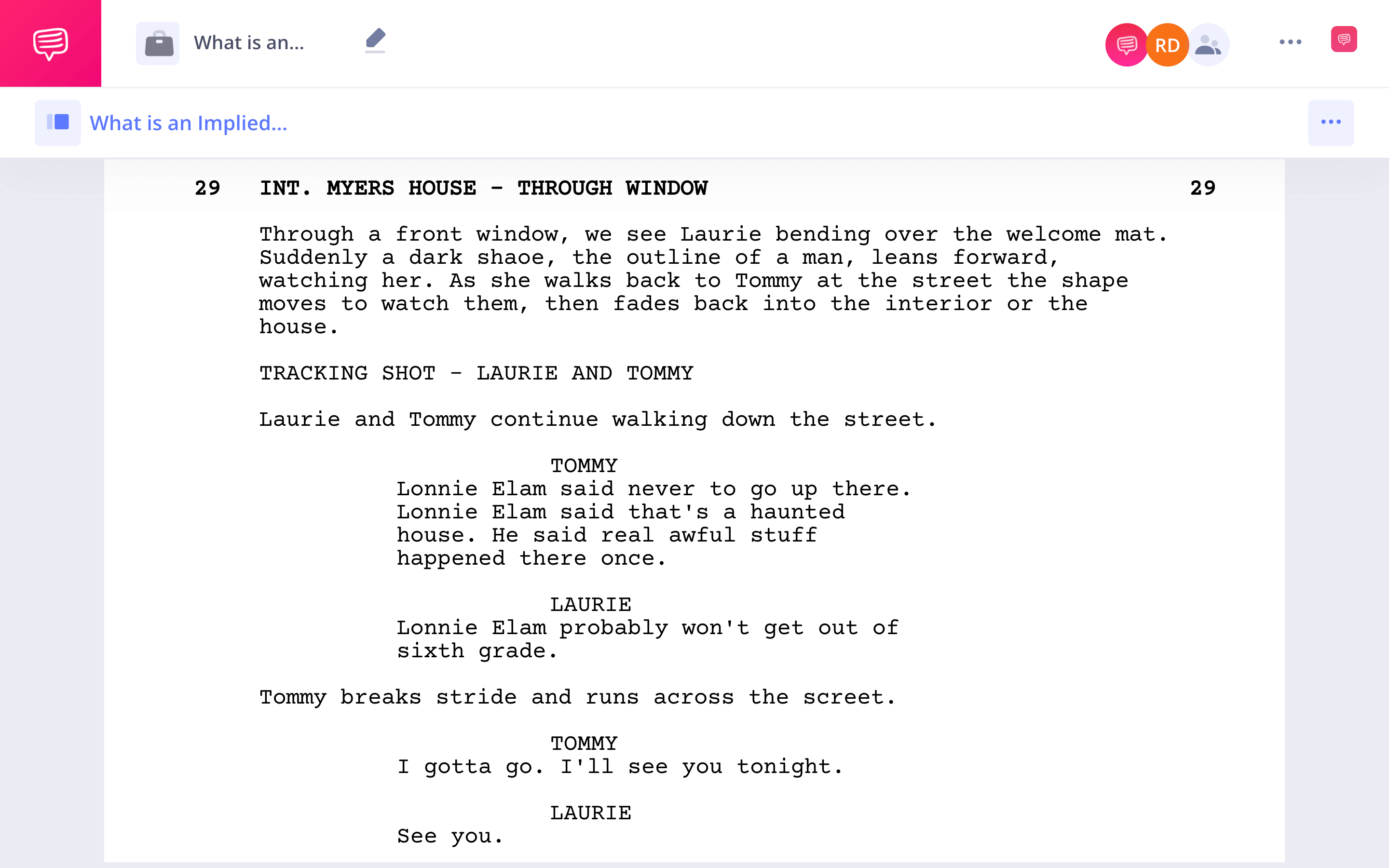Metaphors are a crucial part of any writer’s prose. The figurative language technique can illustrate an idea or image in just a few words. Metaphors come in all shapes and sizes. One of the subtlest of its forms is the implied metaphor– a linguistic flare that you can miss if you’re not looking. But just because it can be hard to spot doesn’t mean it’s not important. What is an implied metaphor?
What is an Implied Metaphor?
Implied metaphor definition
Because implied metaphors can be so tricky to nail down, it’s crucial to have a good understanding of what exactly they are in the first place.
Let’s look at a definition.
IMPLIED METAPHOR DEFINITION
What is an Implied Metaphor?
An implied metaphor suggests a figurative comparison without explicitly naming one of the elements being compared. This is often done by using non-literal verbs; for example, “Sarah was shattered by the news.” Sarah is being compared to glass through the use of “shattered.”
Implied Metaphor Examples:
- He was chomping at the bit for the opportunity.
- She barked orders.
- He fetched the garbage.
Still a little confused about the implied metaphor definition? To further understand how the metaphor works, you need to know how to write one.
What is an Implied Metaphor?
Writing implied metaphors
You may already be writing implied metaphors and not realizing it. In order to write an implied metaphor deliberately, it’s helpful to understand the pieces of a basic metaphor.
A metaphor can be broken into two parts: A tenor and a vehicle. The tenor is the subject on which the traits of the vehicle are being transferred.
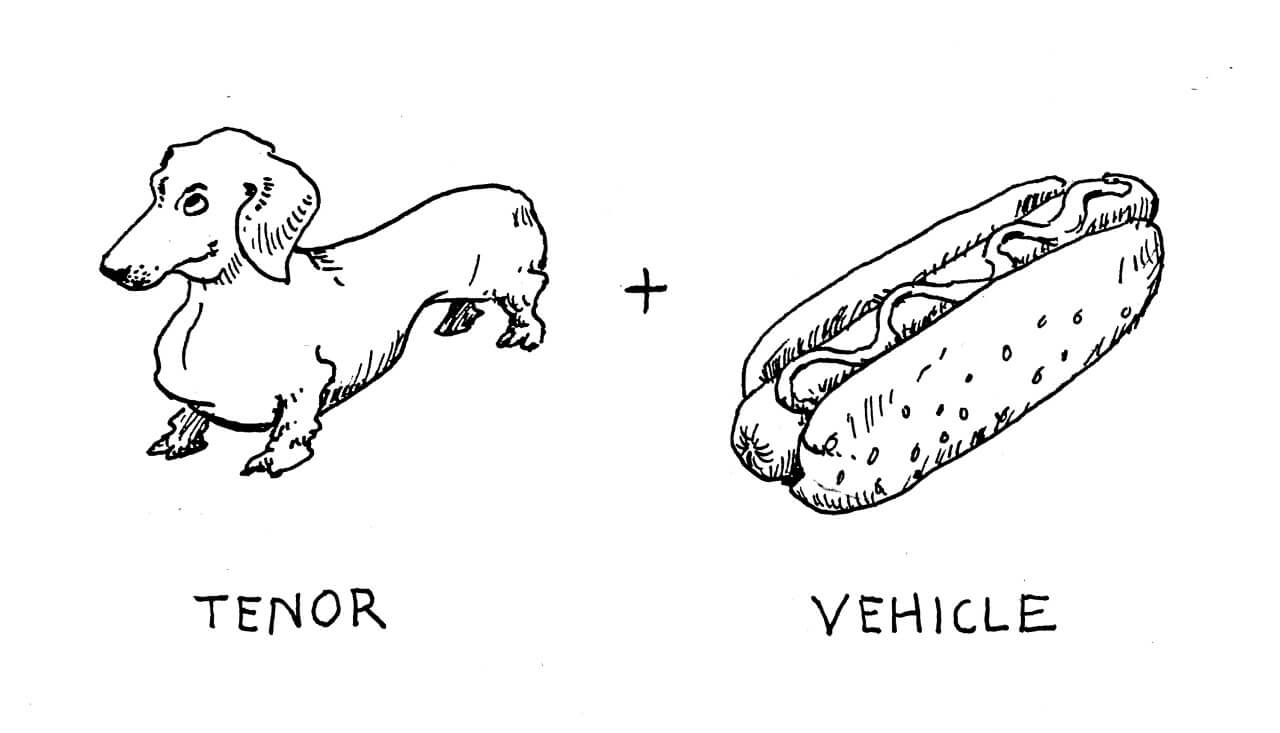
Implied metaphor examples
Okay– that’s a bit of a mouthful. Let’s take the sentence “Vivek was an erupting volcano, screaming at the cast and crew.” The metaphor in the sentence is “Vivek was an erupting volcano.” Vivek is the tenor, and the volcano is the vehicle– the traits of the volcano are being transferred onto Vivek.
Tenors and vehicles can’t be swapped. Take our example in reverse: “The erupting volcano was Vivek.” Unless Vivek is the name of the volcano, this doesn’t make sense. For more on tenors, vehicles, and more metaphorical elements, check out this video:
Metaphors explained
So what does all this have to do with implied metaphors? Implied metaphors remove either the tenor or the vehicle.
Let’s go back to our example, but this time take out the vehicle: “Vivek erupted at the cast and crew.” Vivek is now implicitly being compared to a volcano. Note, too, how much more efficient this sentence is.
Now let’s try taking out the tenor. To make this work, let’s give the metaphor context with a preceding sentence: “We watched on as Vivek finally lost his cool. The volcano erupted at the cast and crew.”
We understand “the volcano” is in fact Vivek. This method is a bit trickier, so you’ll usually see the vehicle removed.
What is an Implied Metaphor?
When To Use Implied Metaphors
A good implied metaphor is a powerful tool. Let’s look at when an implied metaphor can be of use.
Characterization
Implied metaphors can be a great way to build a character and emphasize their character traits.
For example, let’s say we want to establish a character as an annoying sycophant. We could write: “Charles hovered near the king at all times, buzzing in his ear from morning to night.” By using verbs like “hovered” and “buzzing,” we’re implicitly comparing Charles to a fly.
Using an implied metaphor for characterization can be tremendously efficient– one verb can open up a larger comparison to an entire entity with its own connotations.
Vivid Imagery
A good implied metaphor can conjure an image in a reader’s head, so of course this makes it great for describing a visual.
Take this sentence: “Harry walked into the room.” This doesn’t tell us much of anything visually. But what if we say: “Harry waddled into the room.” This implicitly compares Harry to a duck, and now we’re imagining a man, probably heavy set, slowly making his way into a space. Far more information.
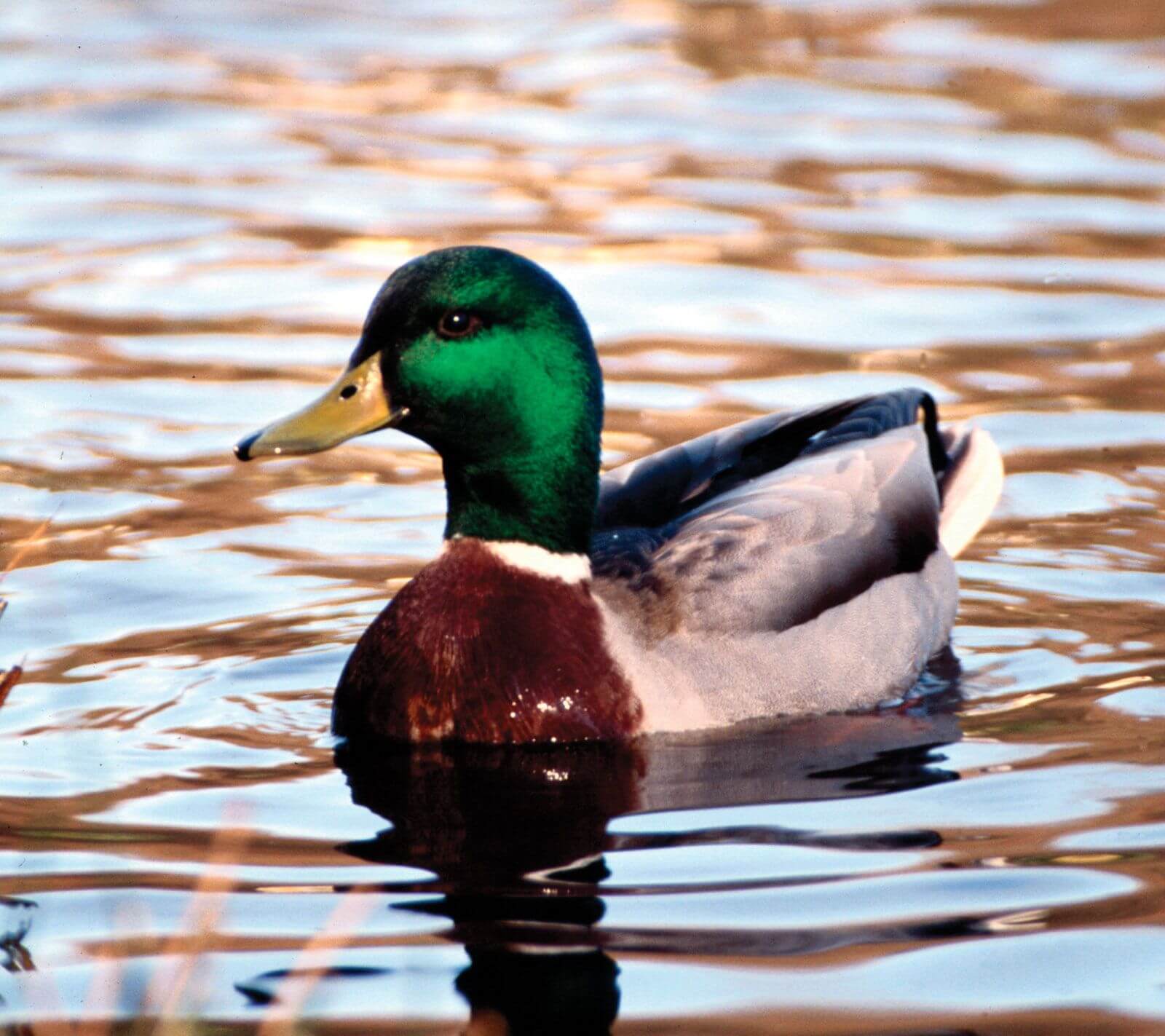
For whom Harry waddles • Implied metaphor examples
An implied metaphor can add detail to a sentence without adding to the word count.
Extend a Metaphor
An implied metaphor can work as part of a larger metaphor. This form is called an extended metaphor, referring to when a figurative comparison is stretched over multiple sentences.
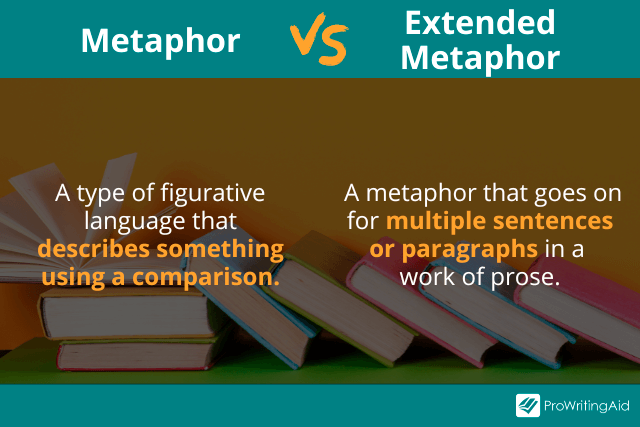
Extended metaphors explained
Example time. Let’s say we have the metaphor “Burcu was a snake.” This metaphor tells us that perhaps Burcu is deceitful and hard to pin down. But what if we elaborate using implied metaphors?
It might look something like this: “Burcu was a snake. She slithered from delegate to delegate, hissing lies about candidates, slipping out of allegations of back-stabbing before returning to her perch above the assembly and warming his cold blood.”
Implied metaphors abound: slithered, hissing, slipping, cold blood. All inform us about Burcu’s nature while drawing on one core comparison.
Related Posts
What is an Implied Metaphor?
Implied metaphor examples
Implied metaphors are everywhere: you can find them in books, television, film, and beyond. Let’s look at a couple examples.
“Hope is a Thing with Feathers,” Emily Dickinson
“Hope” is the thing with feathers
That perches in the soul
And sings the tune without the words
And never stops – at all
In this famous poem, Emily Dickinson compares hope to a bird, but never explicitly names the animal. This metaphor could also be categorized as extended, since Dickinson returns to the comparison in each line.
“Their Eyes Were Watching God,” Zora Neale Hurston
She could feel him and almost see him bucking around the room in the upper air. After a long time of passive happiness, she got up and opened the window and let Tea Cake leap forth and mount to the sky on a wind.
Here, Hurston uses verbiage associated with horses (bucking, mount) to illustrate the delightful vibrant energy of her husband. Figurative language abounds in this passage, intertwining and interacting– Hurston also describes the man as flying. The overall effect is one of emotional ecstasy.
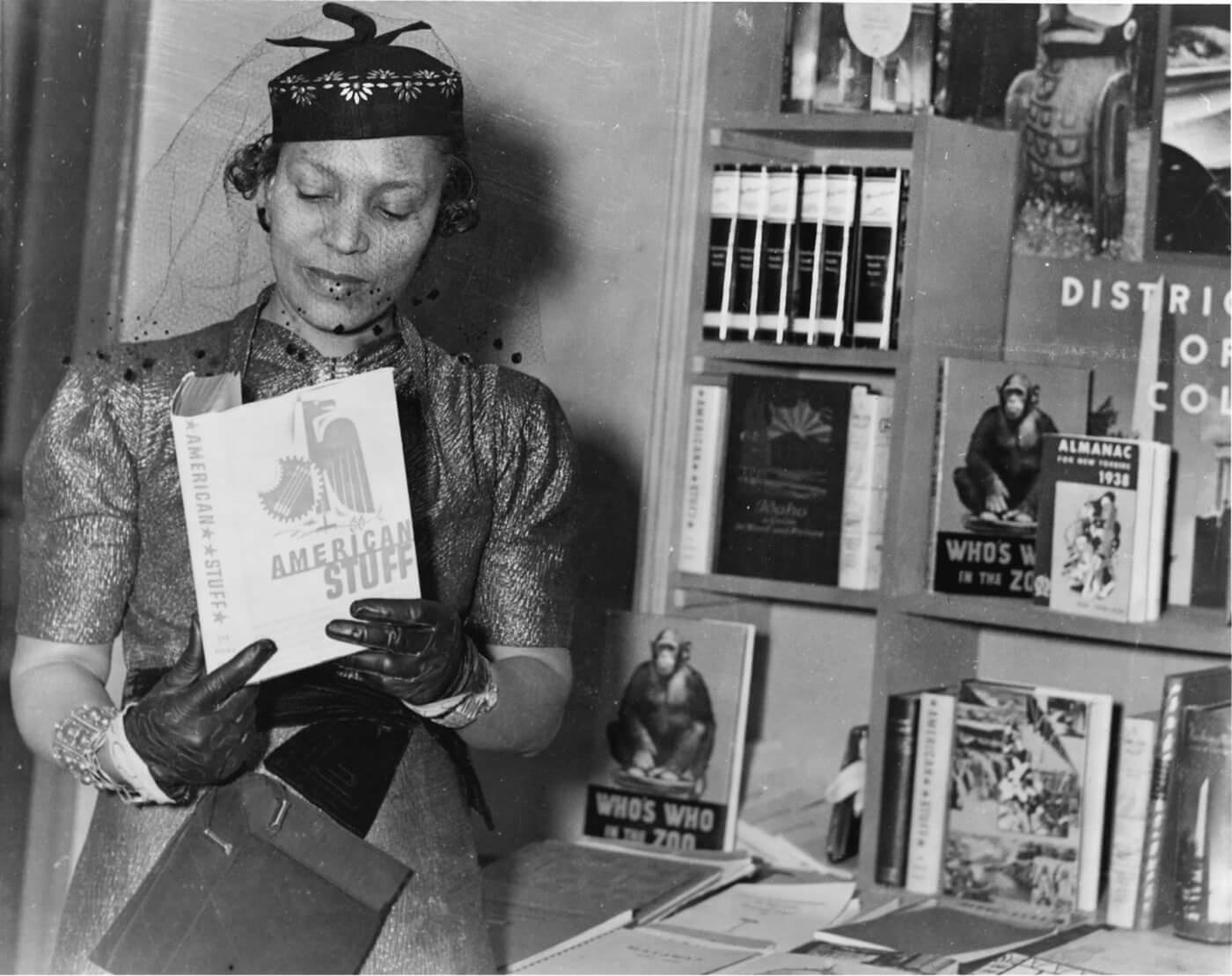

Zora Neale Hurston • What is implied metaphor?
“Sad-Eyed Lady of the Lowlands,” Bob Dylan
With your silhouette when the sunlight dims
Into your eyes where the moonlight swims
And your matchbook songs and your gypsy hymns
Who among them would try to impress you?
Like Hurston, Bob Dylan uses a cocktail of figurative language in his magnum opus. In this stanza, we can see a particularly evocative implied metaphor: “Into your eyes where the moonlight swims.” Here, the subject’s eyes are being implicitly compared to water through the verb “swims.”
“Halloween,” John Carpenter and Debra Hill
John Carpenter and Debra Hill’s script for Halloween is almost as terrifying as the film itself. Their writing is minimalist but descriptive. Take a look at this segment from early in the screenplay, which we imported into StudioBinder’s screenwriting software:
Implied metaphor examples • What is implied metaphor?
In this sequence, Michael Meyers is lurking in the background as Laurie goes about her daily routine. Notice the use of the implied metaphor in the action: “then fades back into the interior of the house.”
“Fade” implies a ghostly quality onto Meyers, heightening the unsettling nature of the scene.
As these examples illustrate, an implied metaphor can be worked into just about any medium. Used well, it can uncover new layers in your writing.
Related Posts
Up Next
What are Mixed Metaphors?
You’ve got one type of metaphor down, why not try another? Mixed metaphors get a bad rap, but they can actually be a useful tool. You just need to know exactly how they work.

